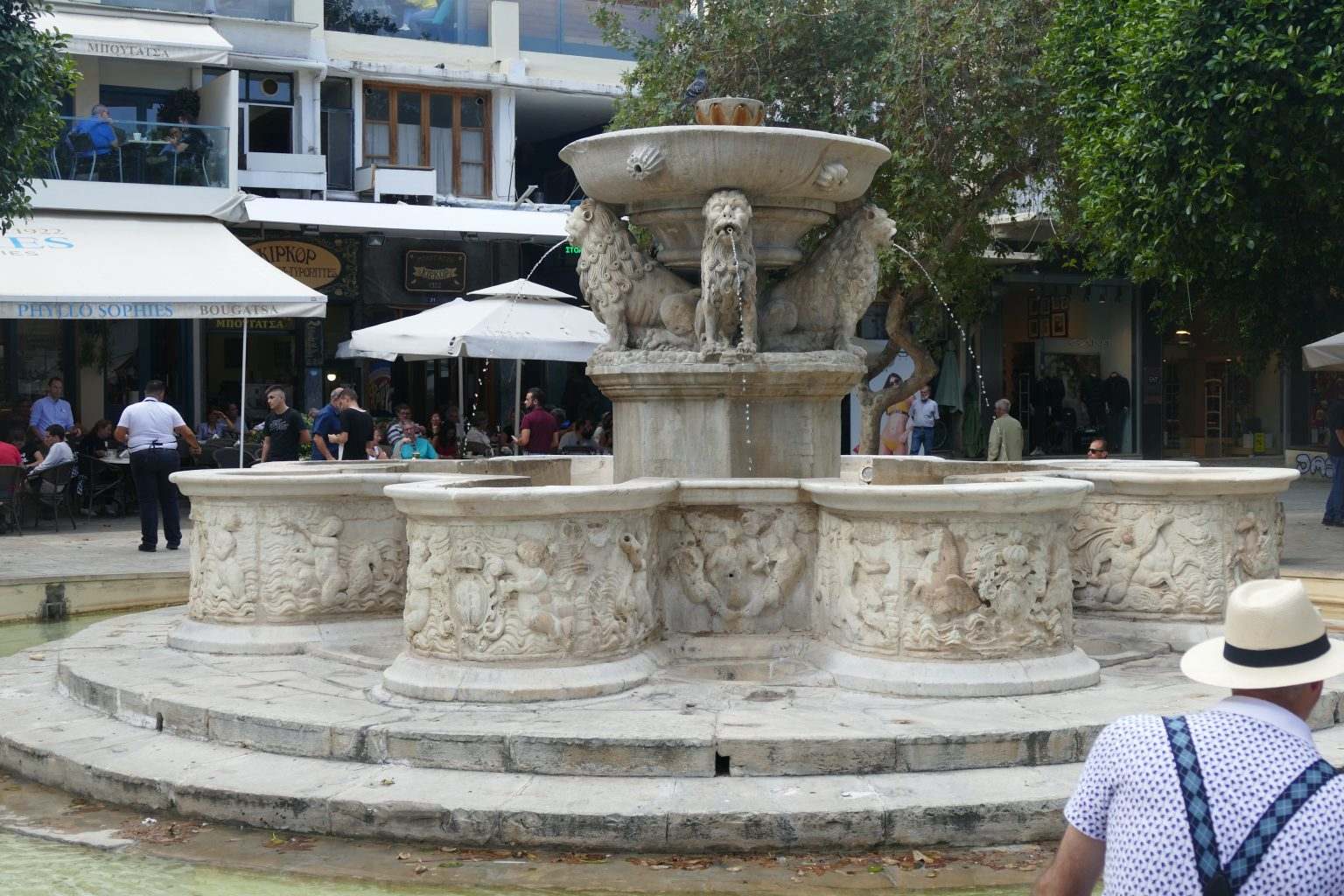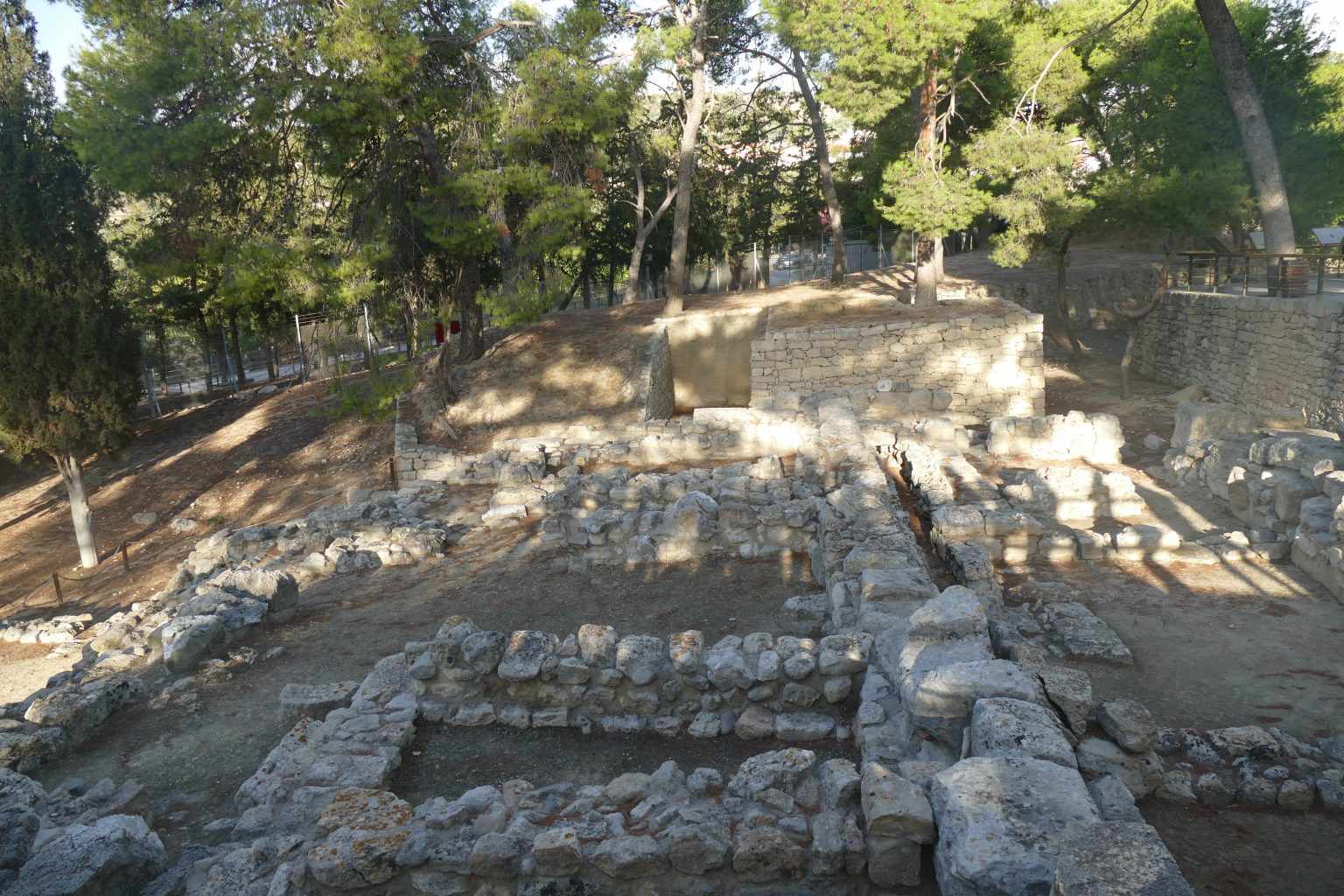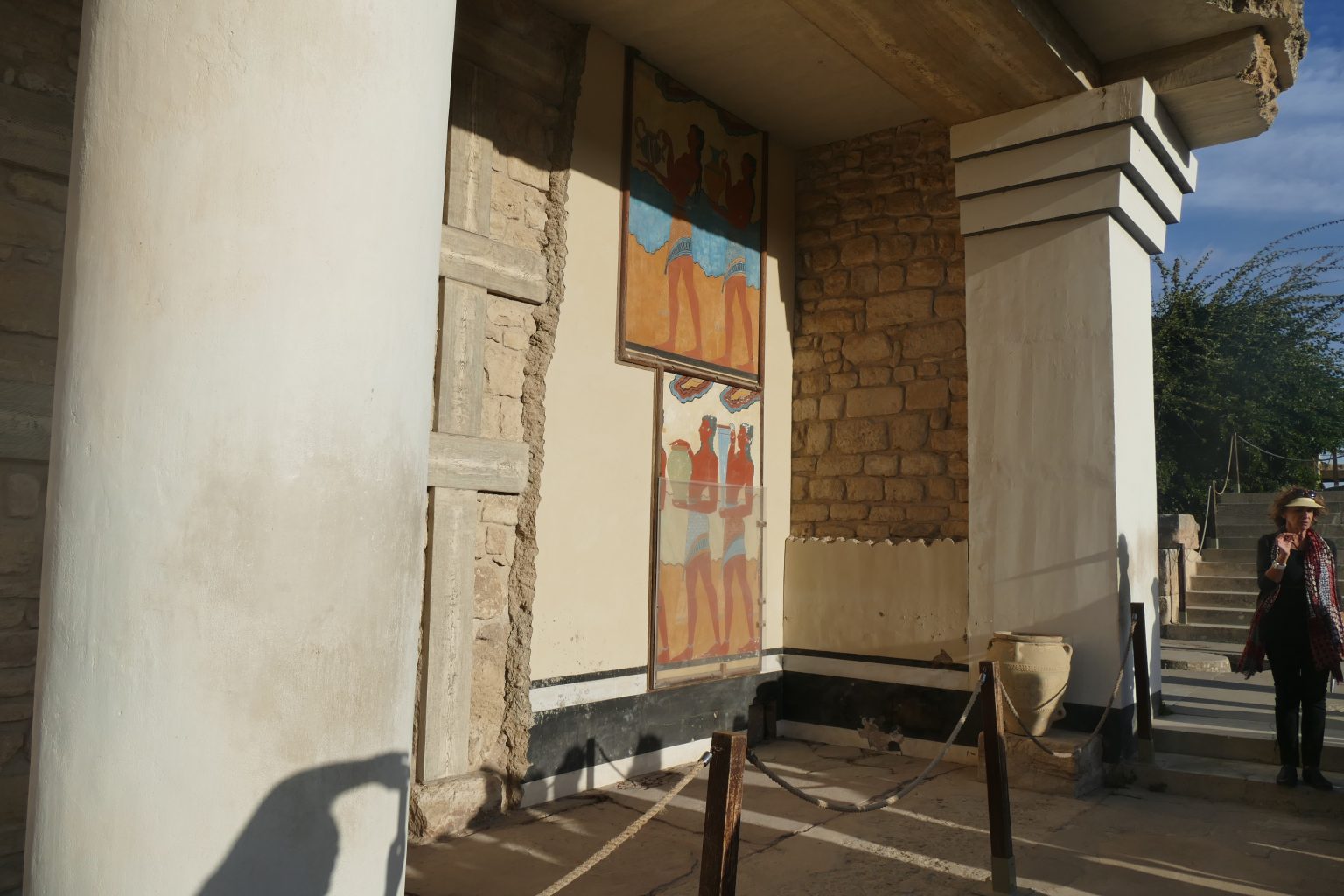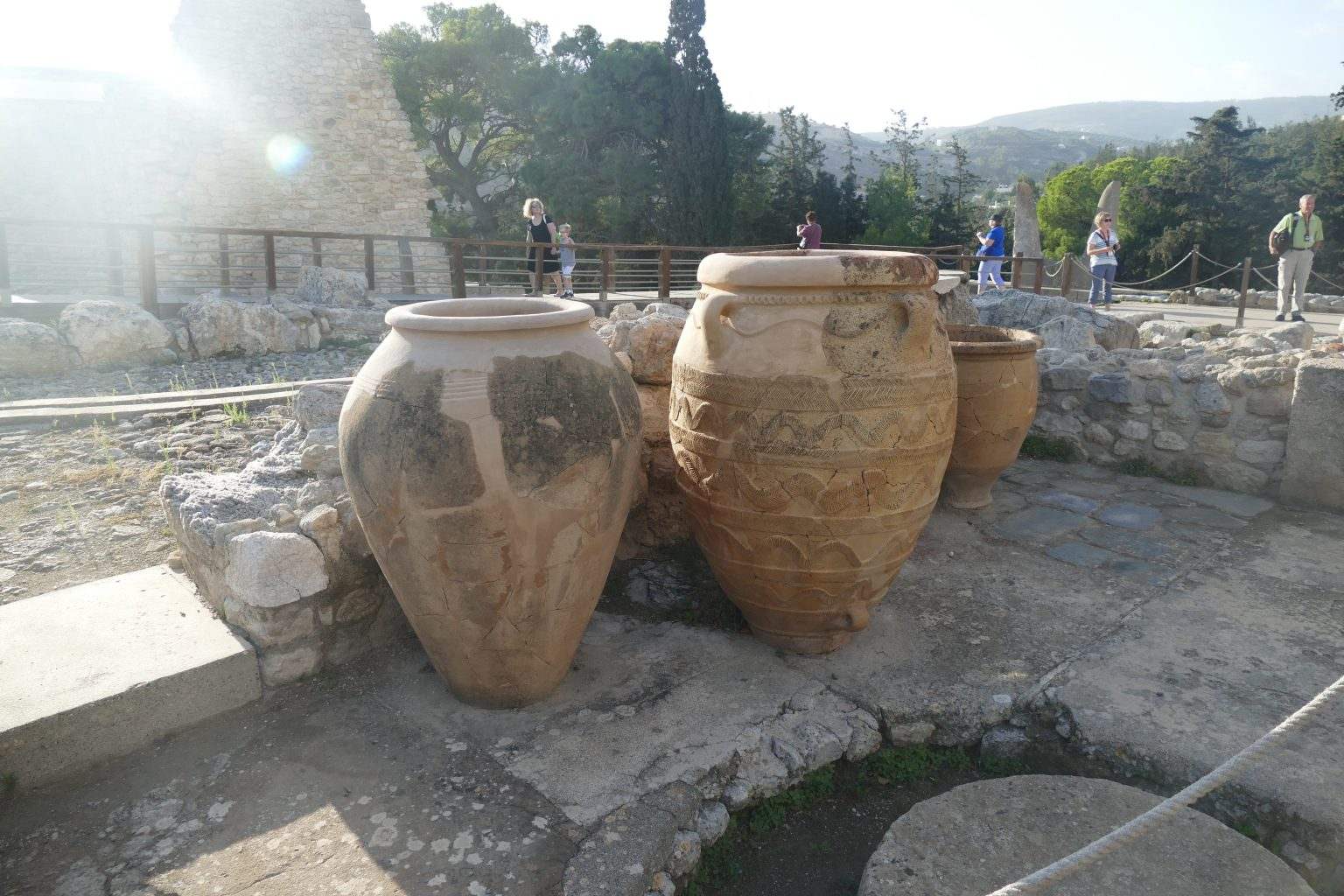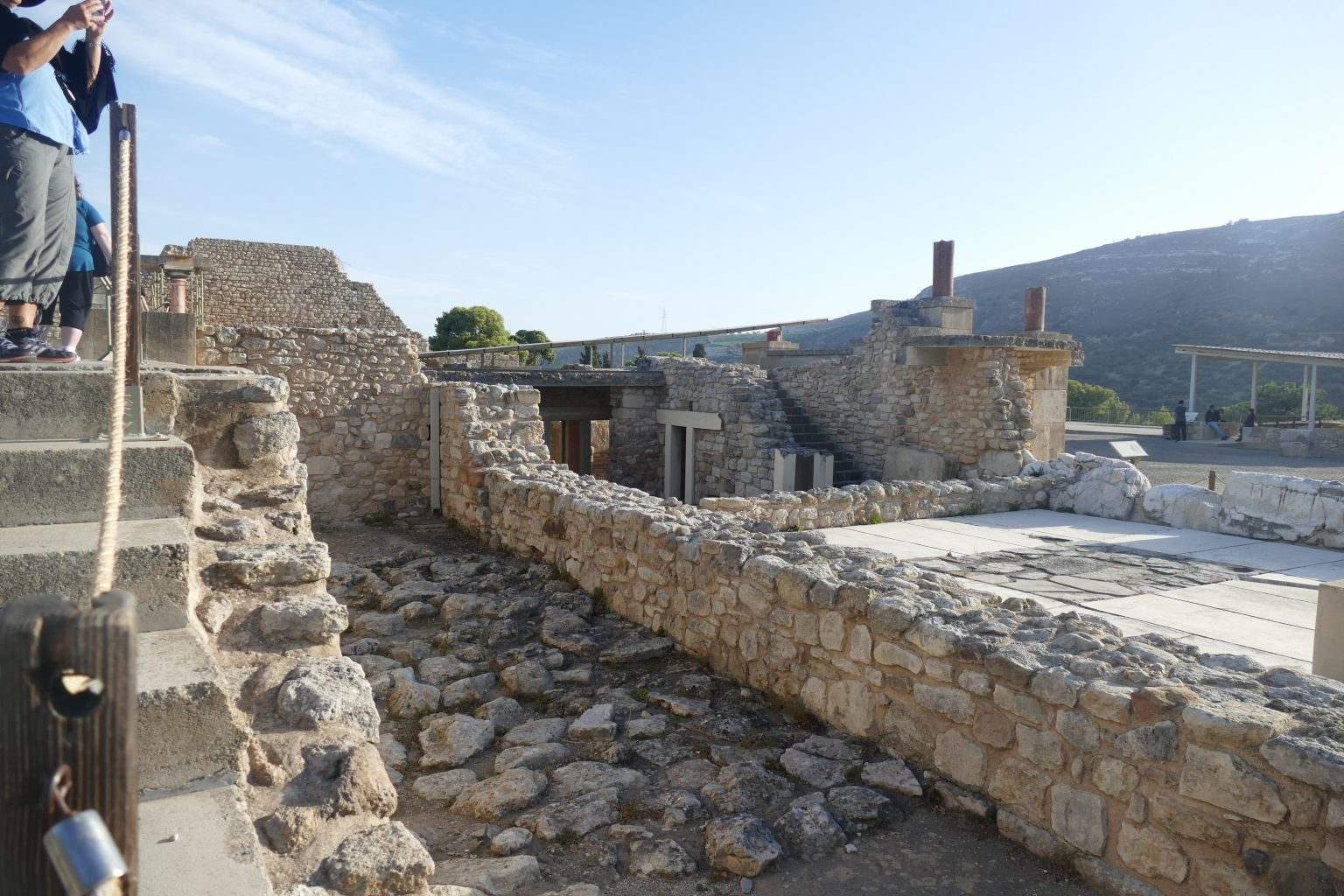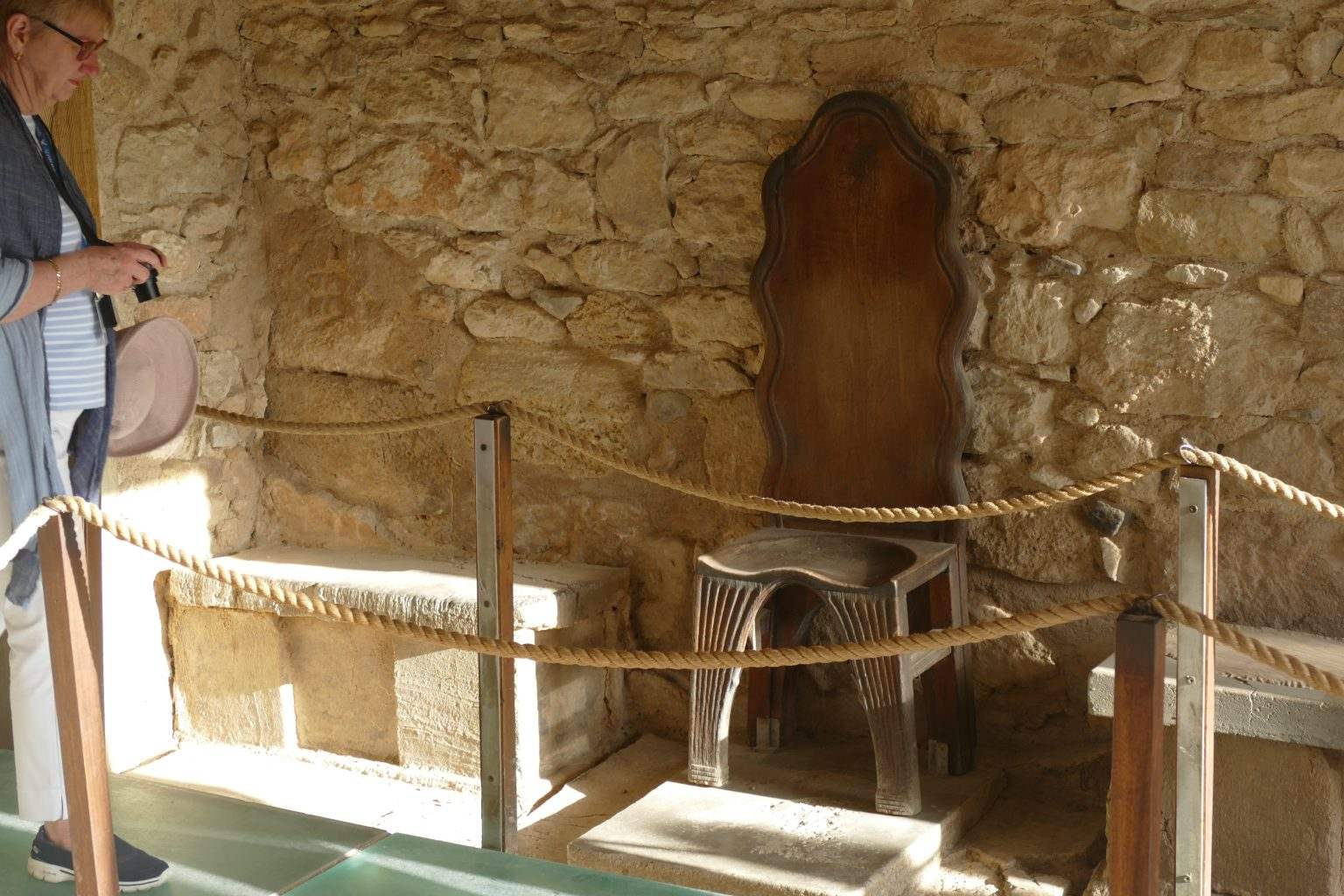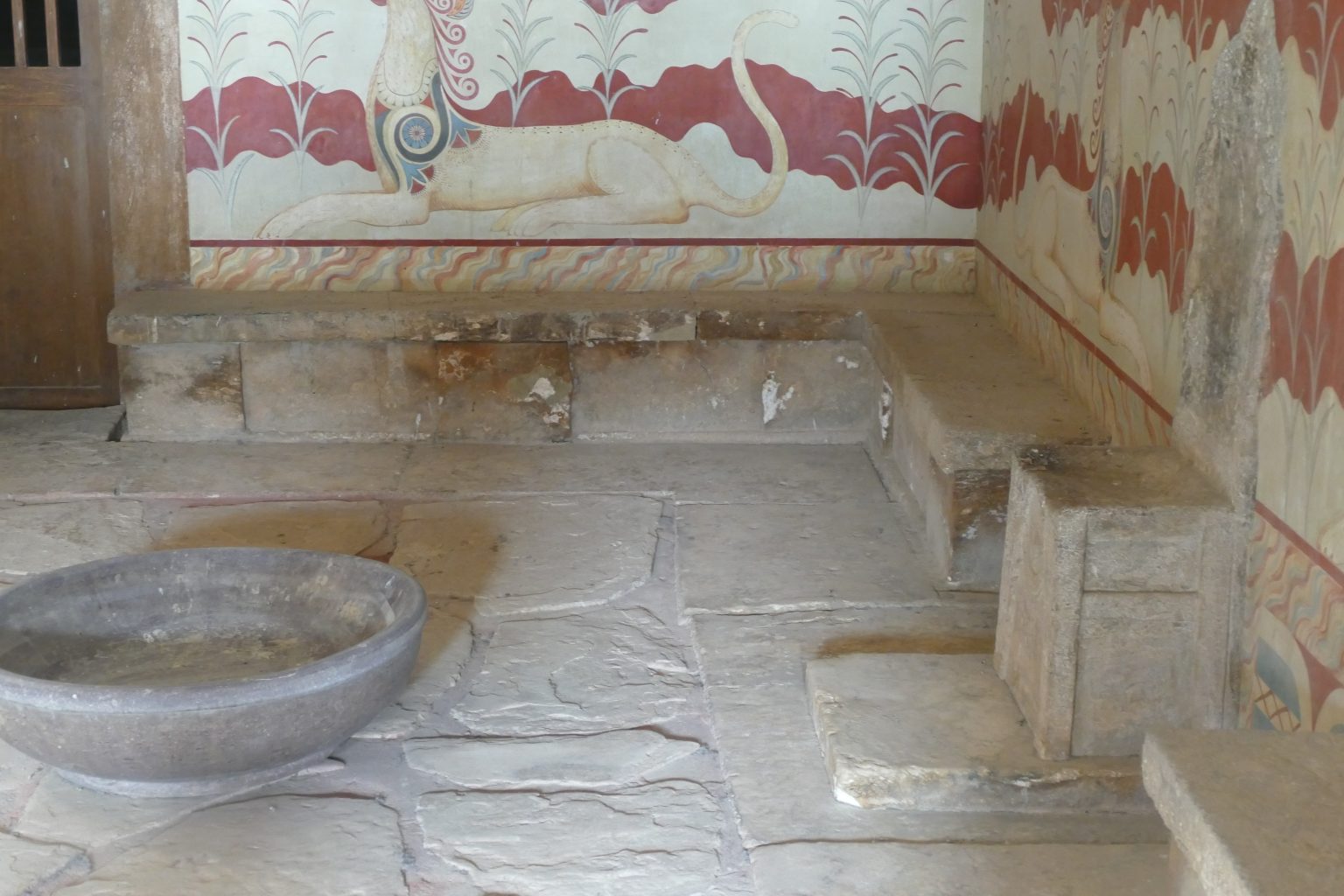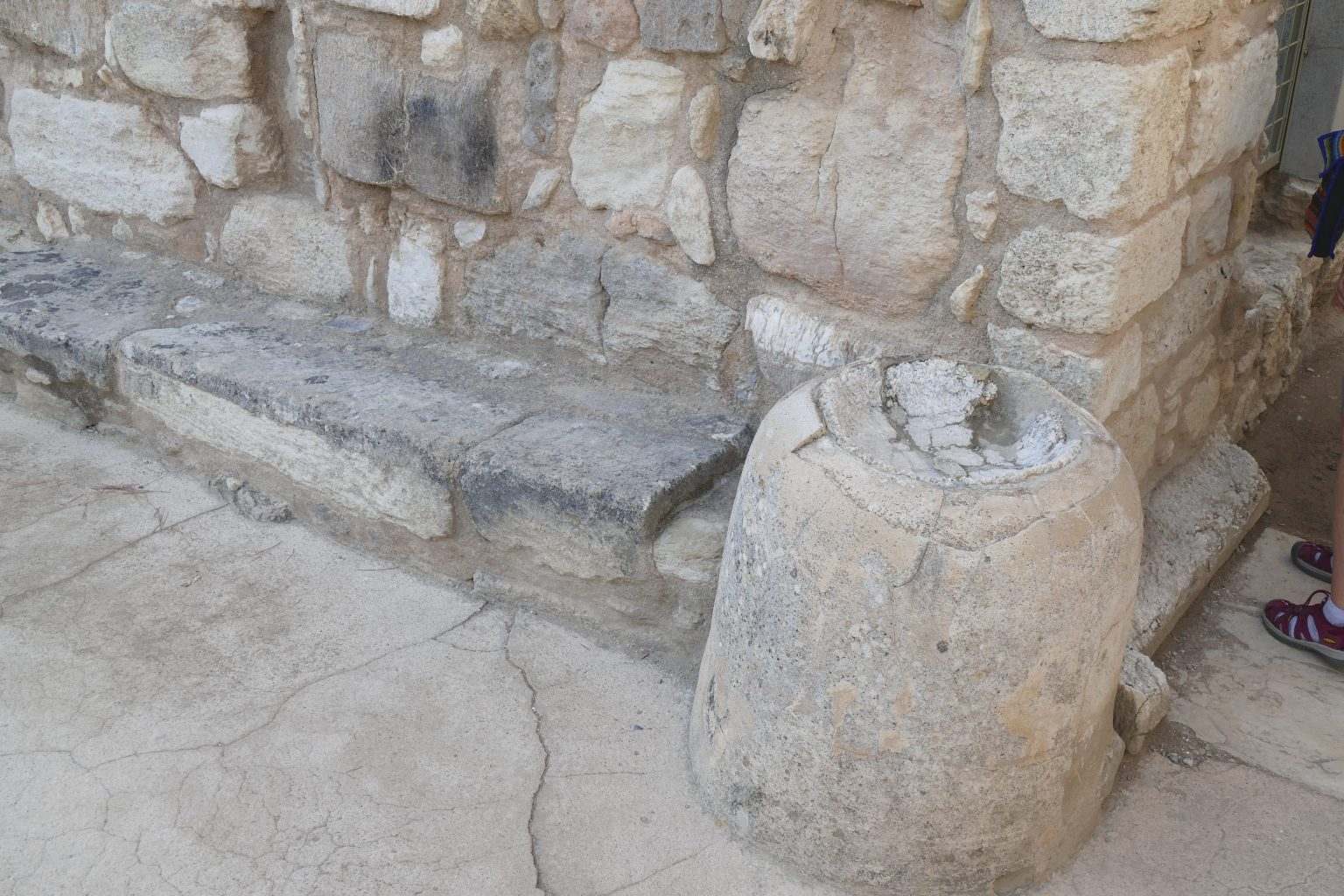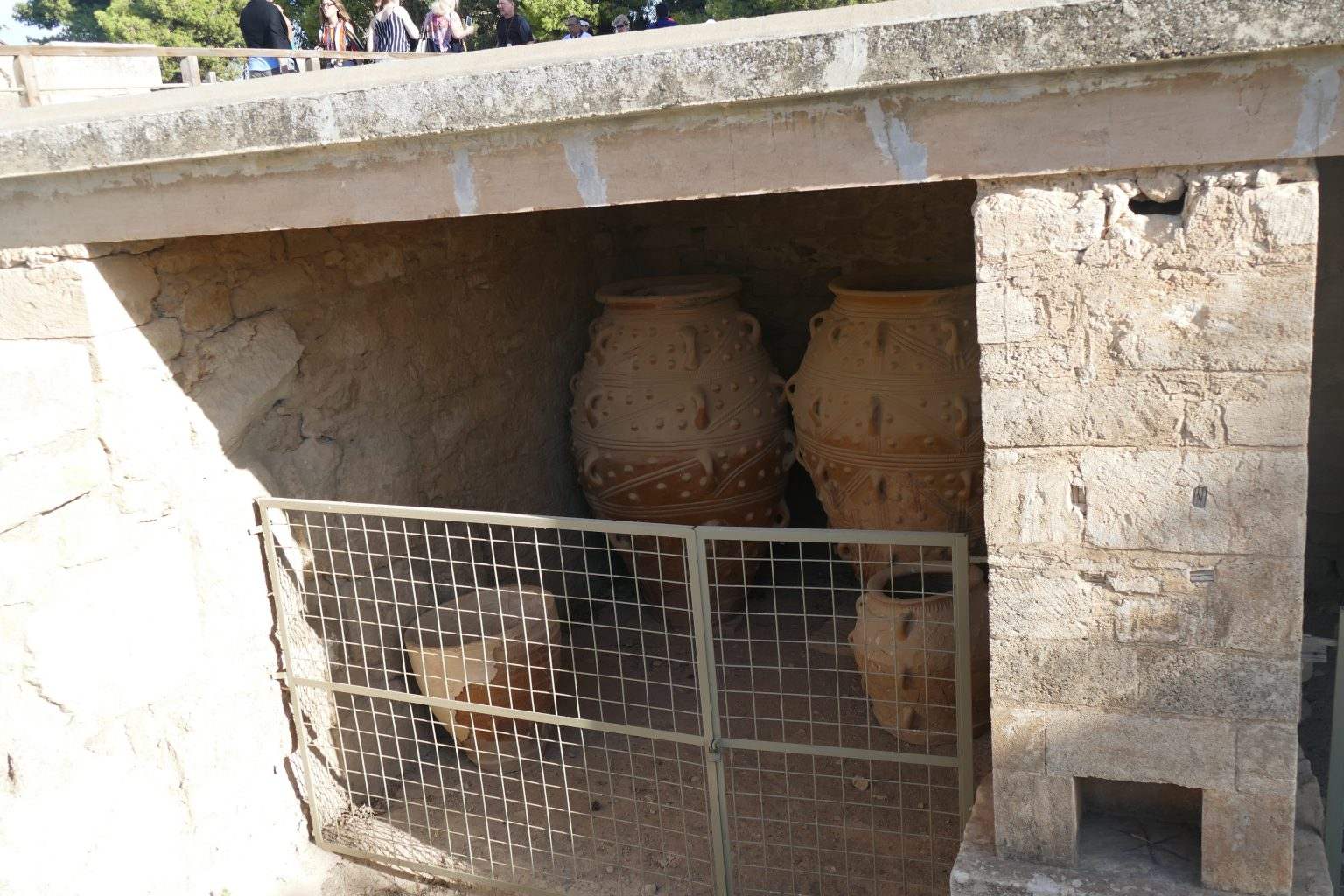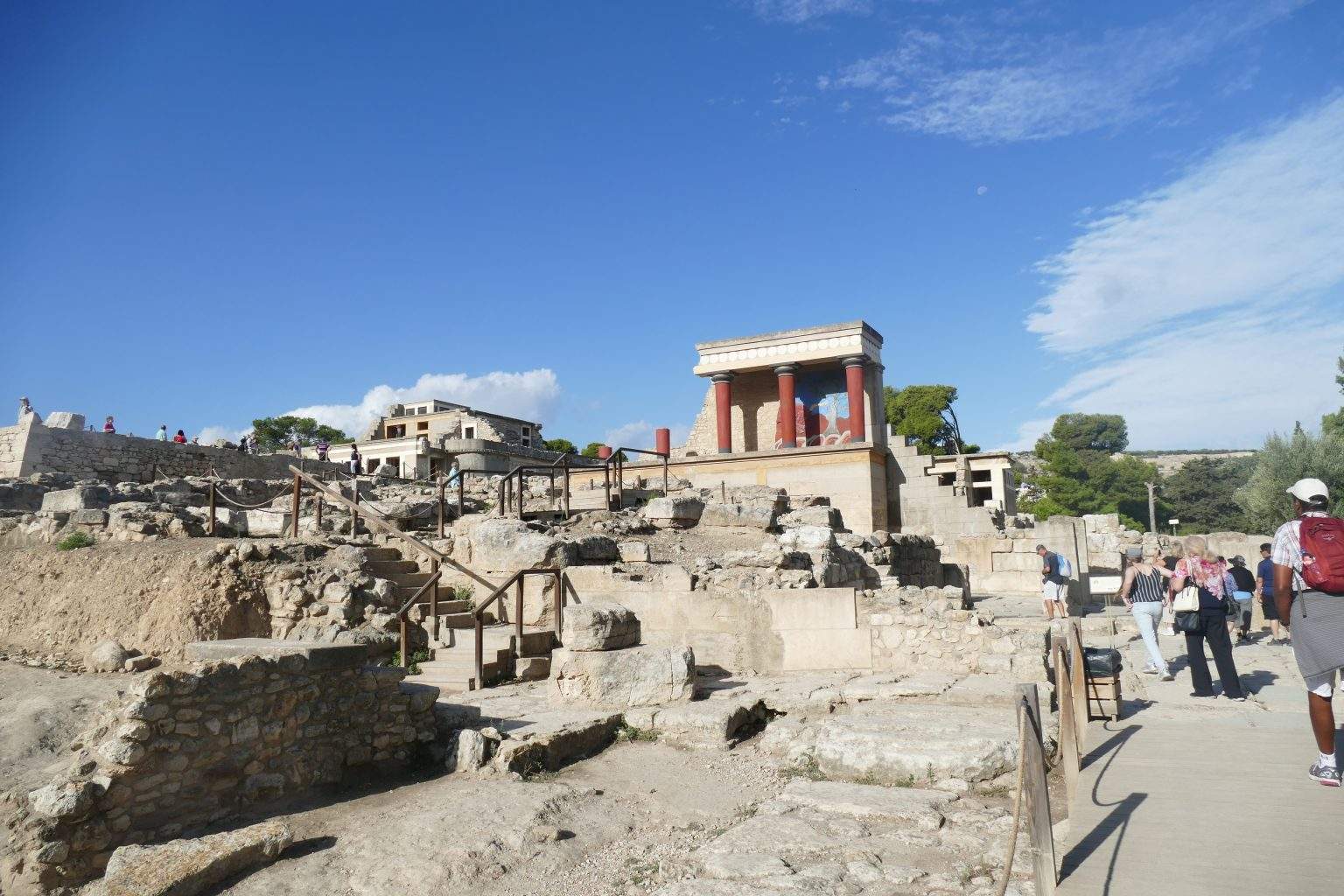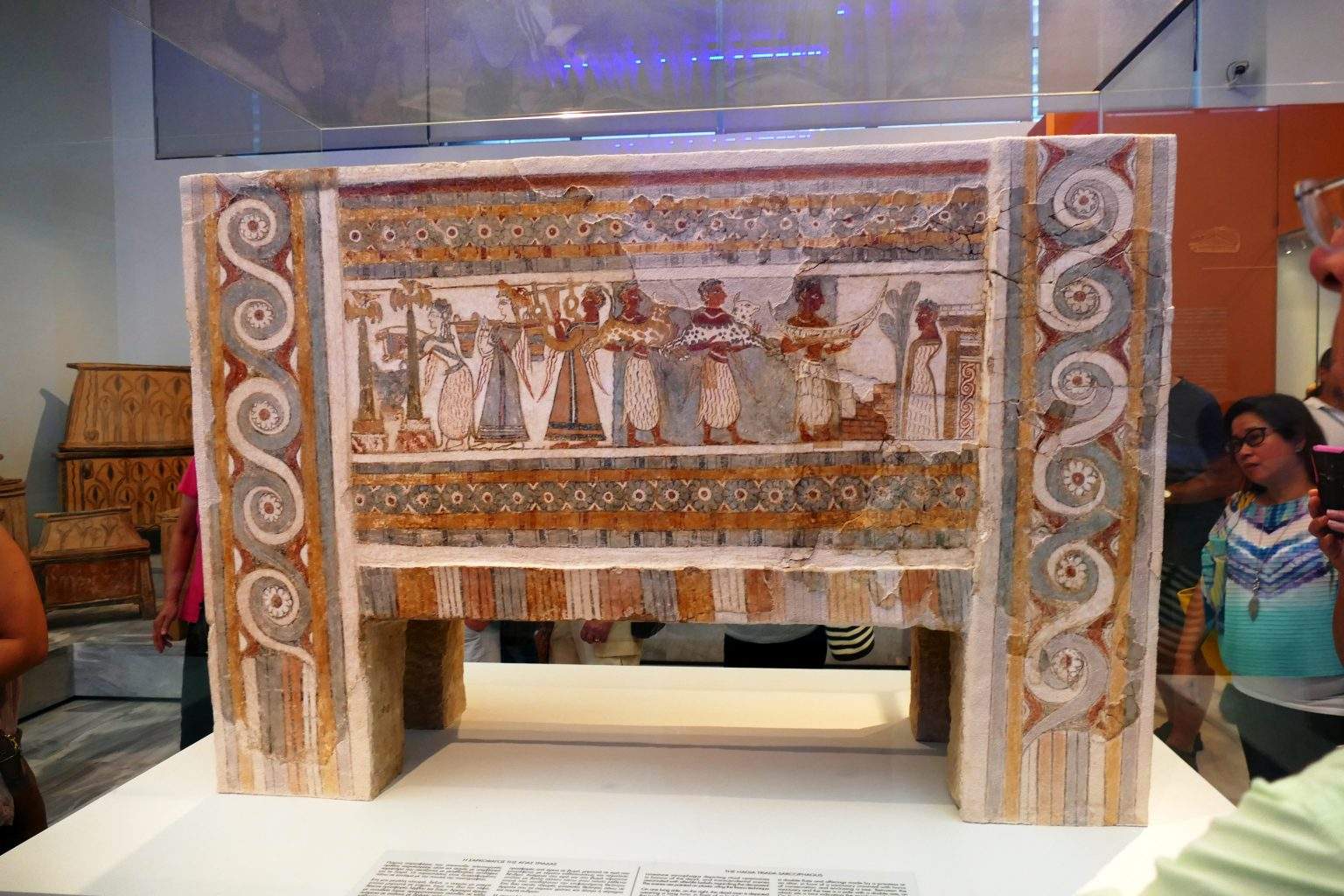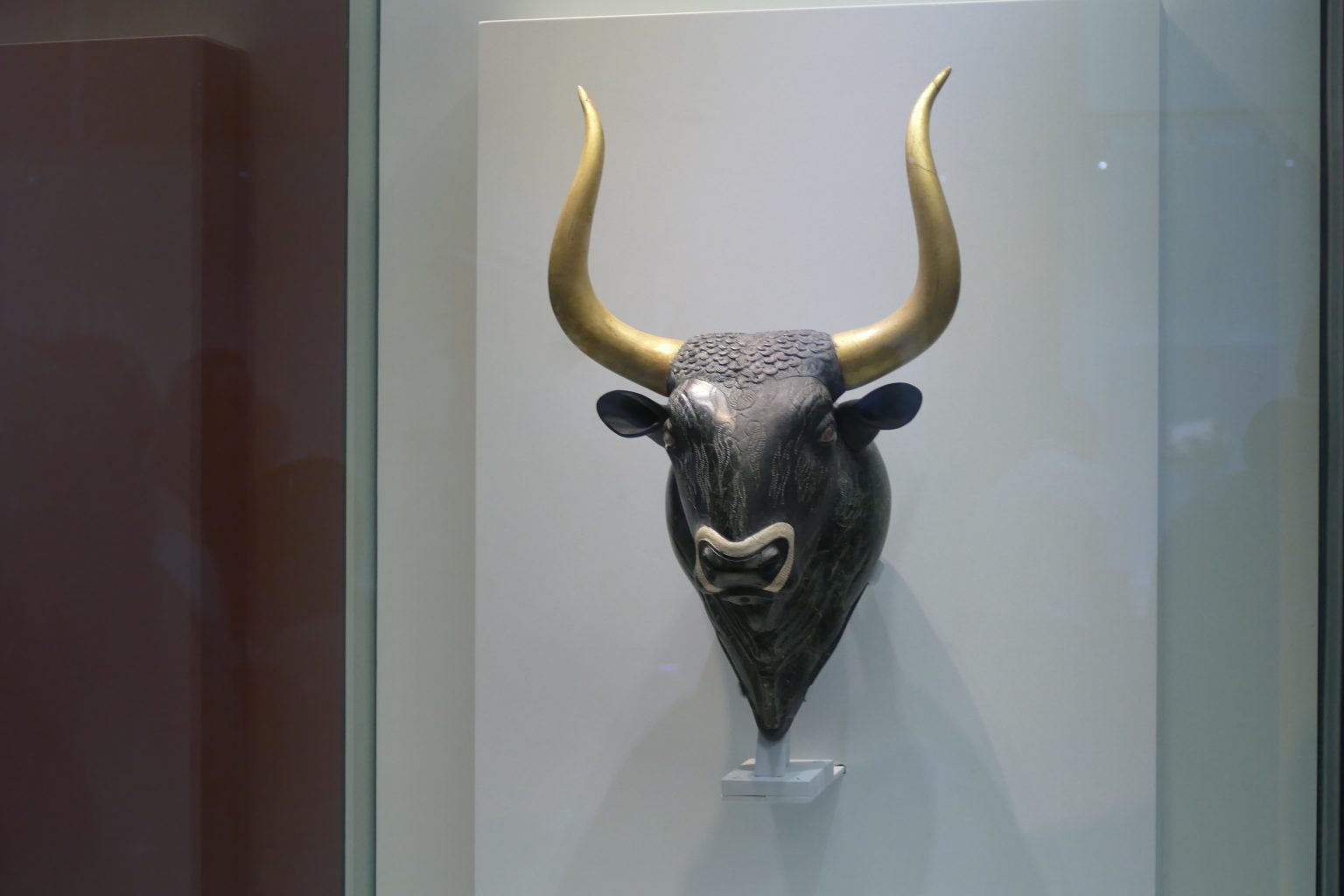Crete
Well, not really Crete, just Heraklion.
Actually not even Heraklion, more the Palace of Knossos and the Museum.
Perhaps the emphasis on these was prompted by the blurb that states: ‘Heraklion is not one of the world’s most beautiful cities’
Palace of Knossos
In its peak, the palace and surrounding city boasted a population of 100,000 people shortly after 1700 BC.
It was rediscovered in 1878, and from 1900 to 1935 Arthur Evans restored many areas, using modern materials, rather than the originals. Debate rages over how accurate his restoration work was, some labelling it a pure fantasy.
Museum
Officially the Archeological Museum of Heraklion.
Probably the best archeological museum I have seen. Very well laid out, logical flow, and clearly labelled.
Clay vessels from 3000 to 1900BC. Extremely skillfully made, as well as aesthetically appealing.

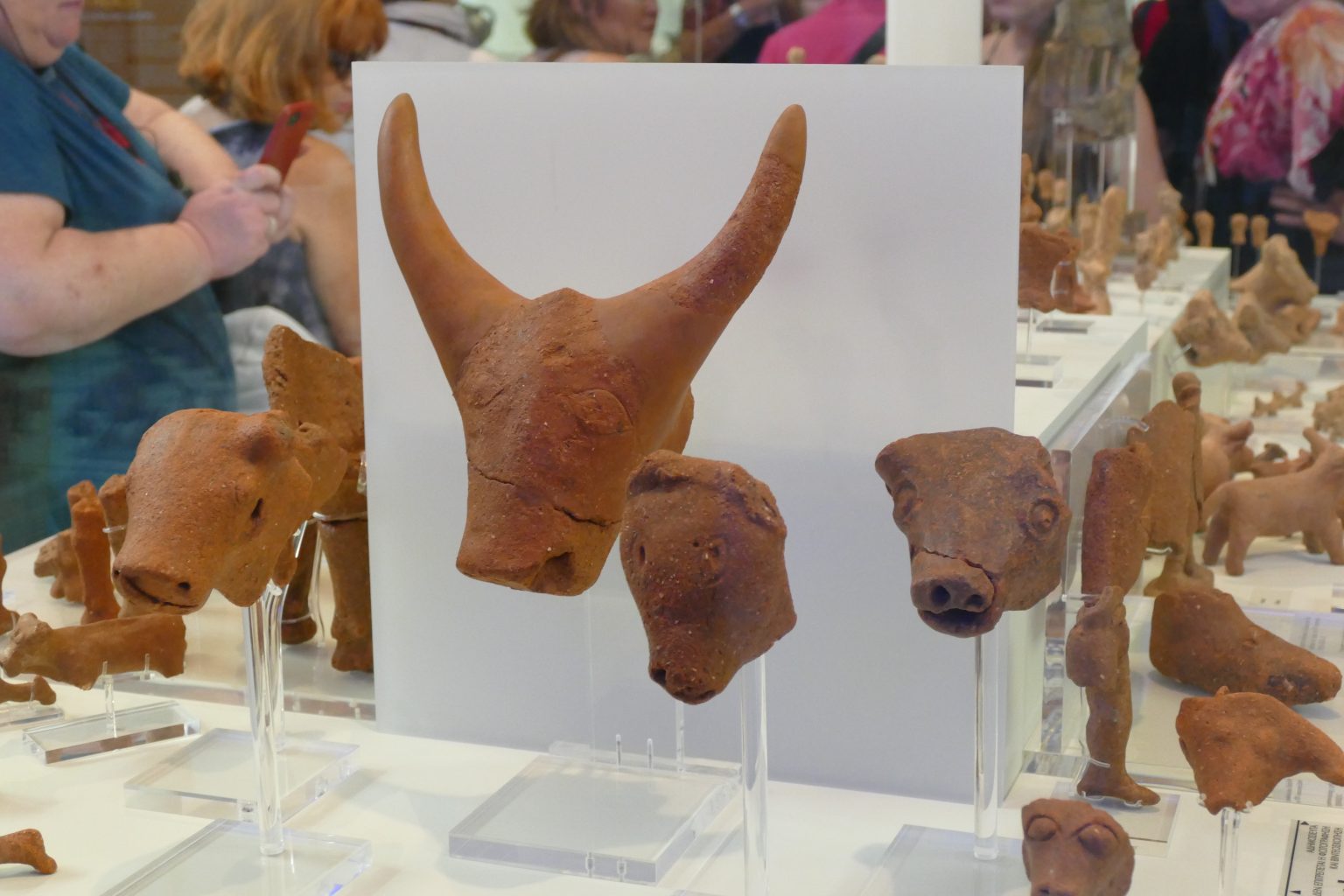 Clay tablets of Linear A – a not yet deciphered script
Clay tablets of Linear A – a not yet deciphered script 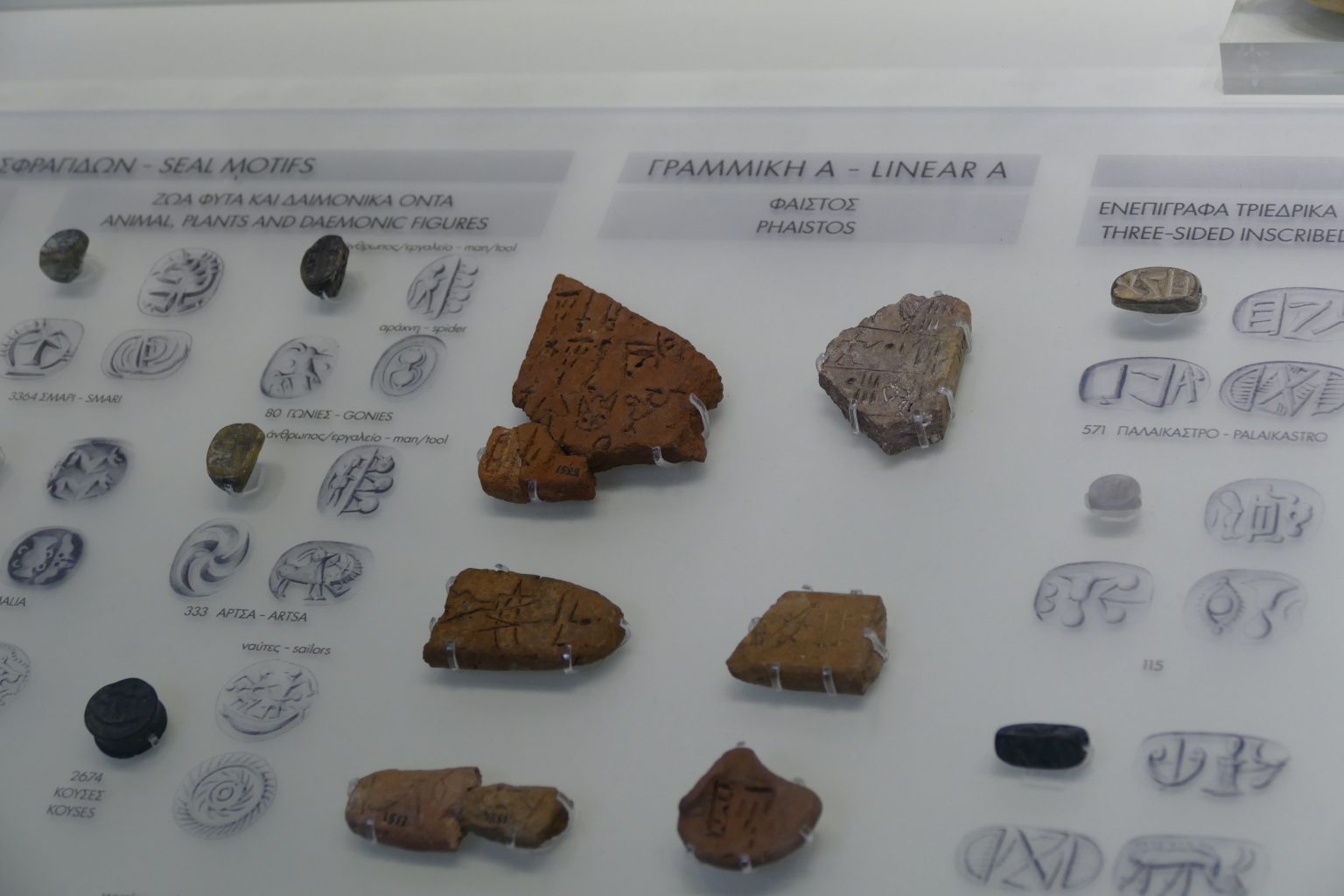
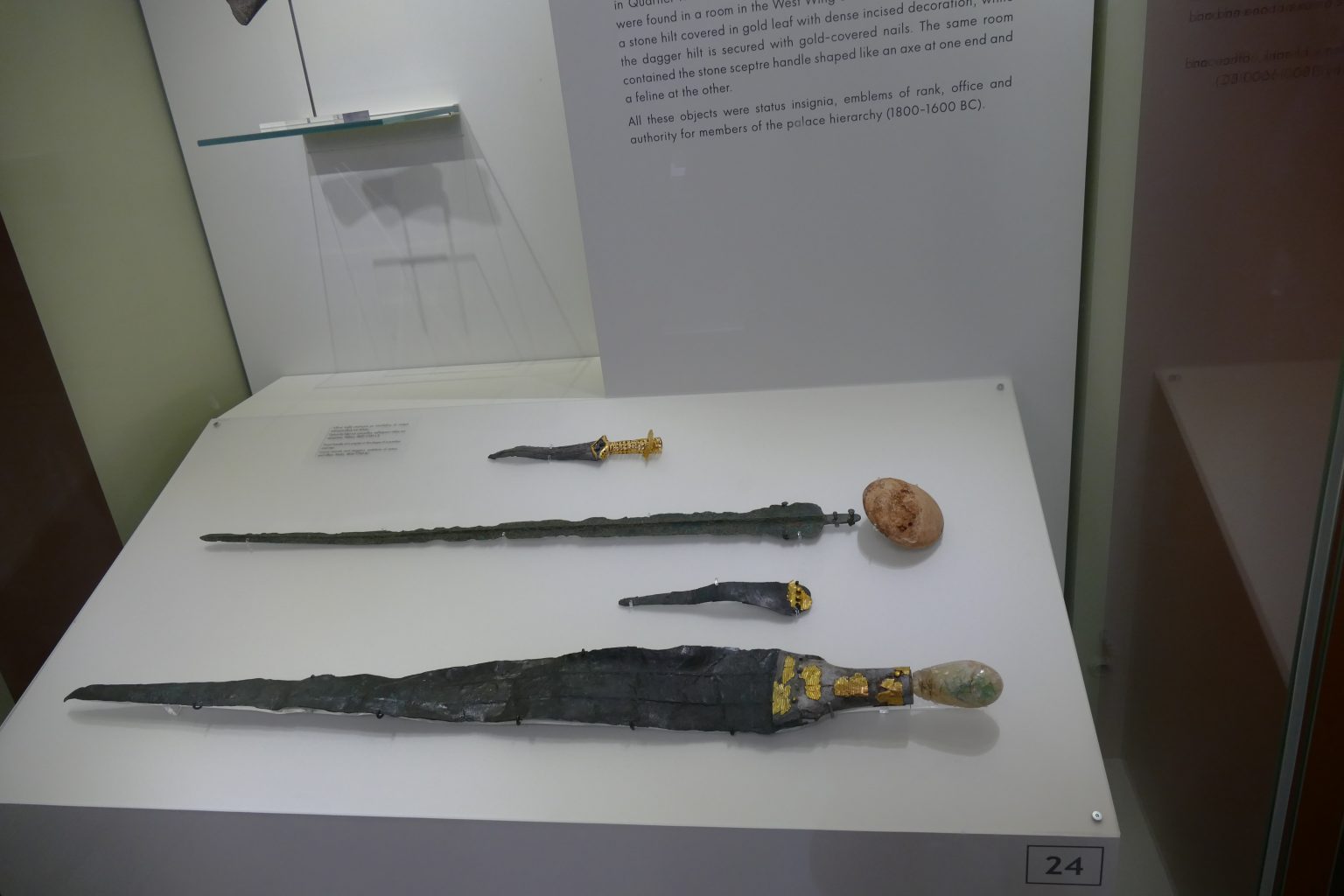
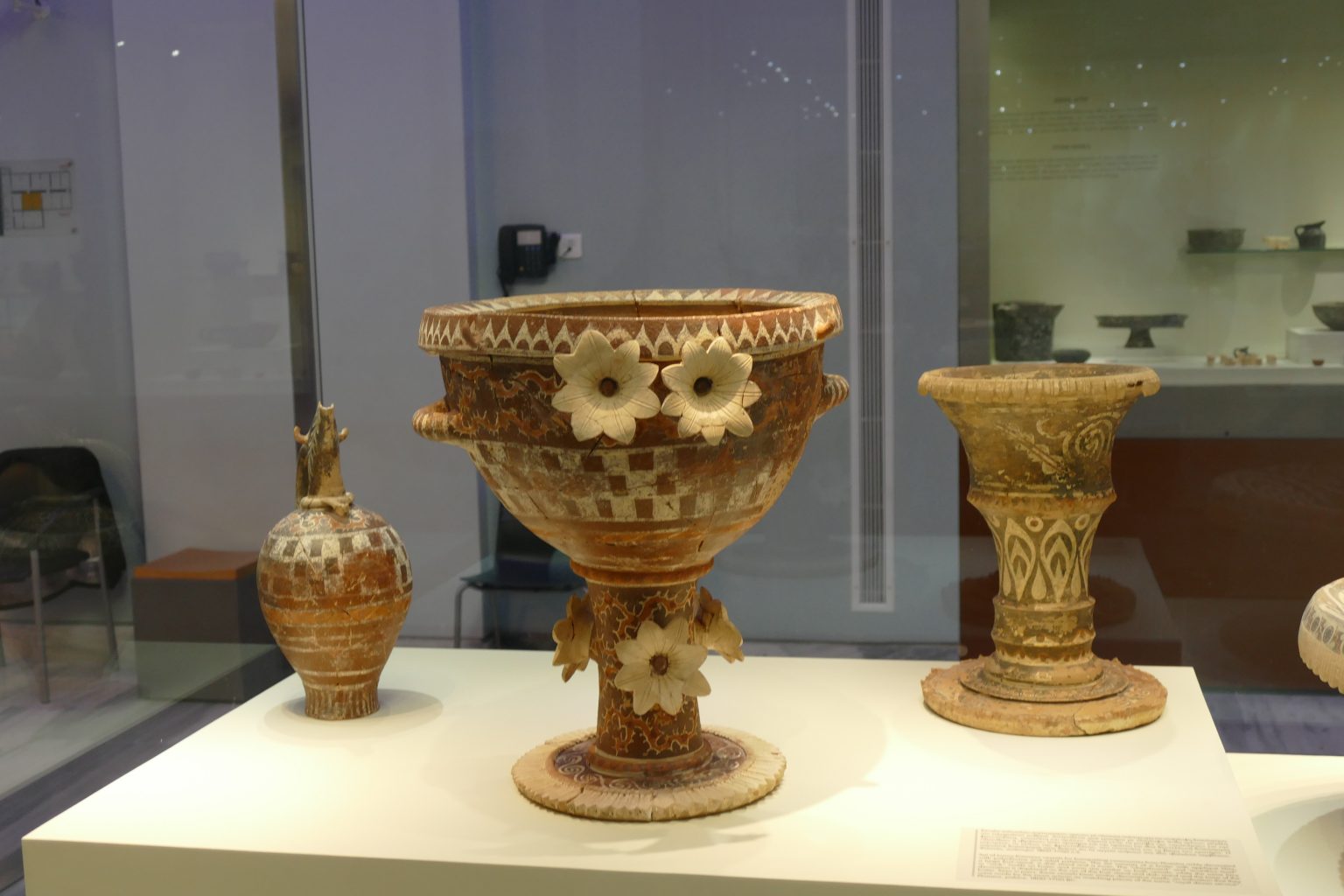 Wooden model of the Palace of Knossos
Wooden model of the Palace of Knossos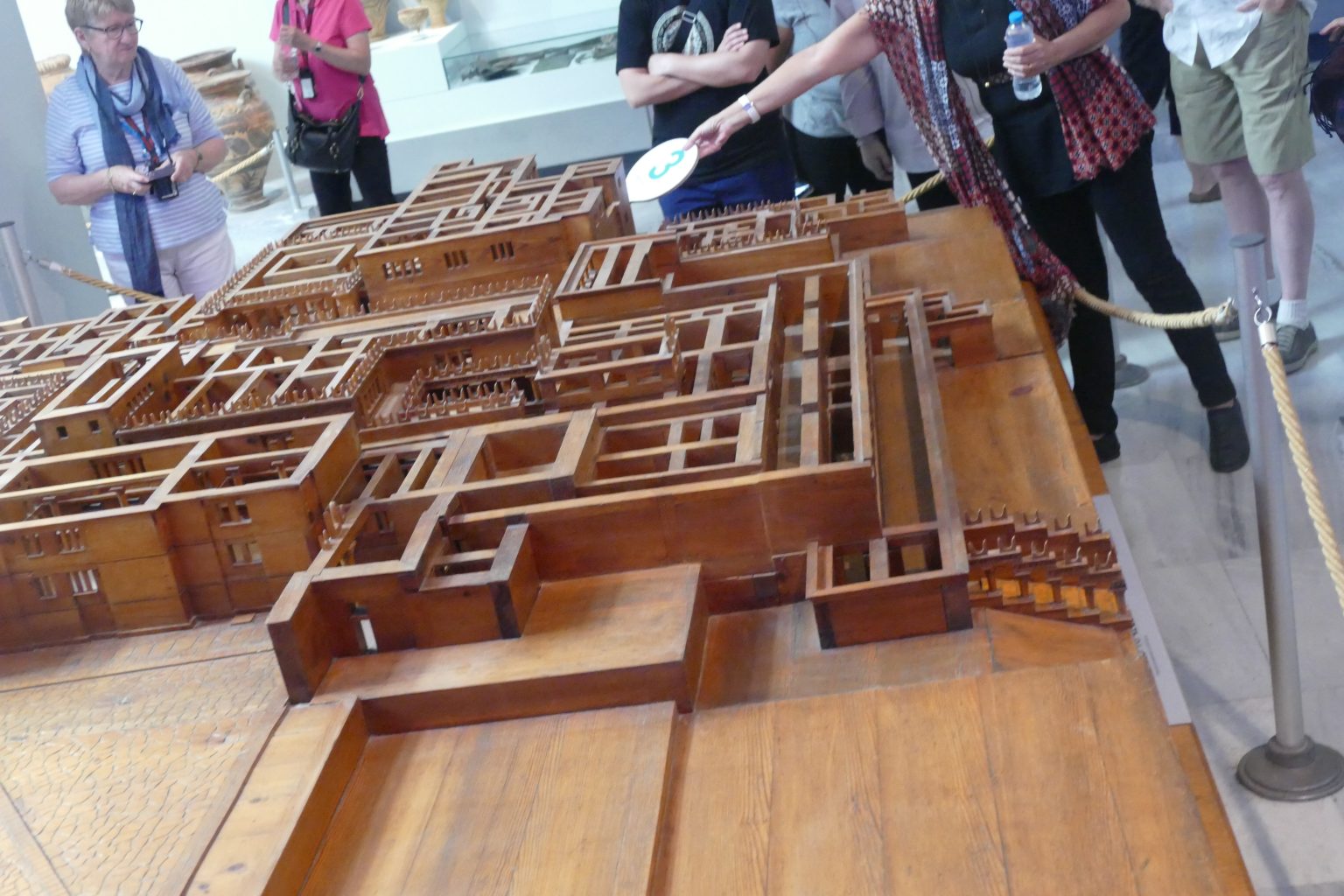 A clay model, showing the Minoans clearly understood how to build multi-storey houses.
A clay model, showing the Minoans clearly understood how to build multi-storey houses. 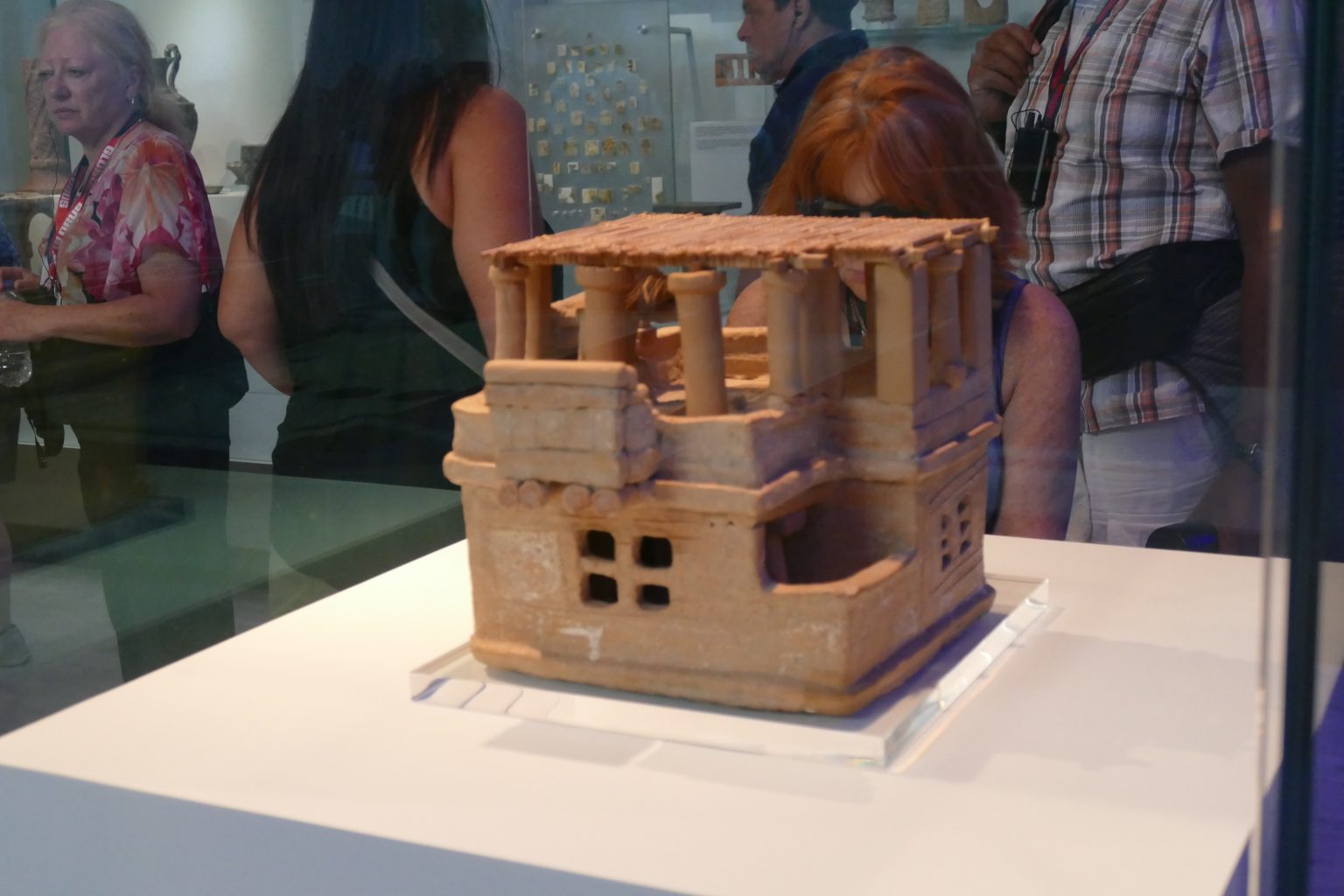
2 person saw blades, used for for cutting down trees. Dating to c1600BC, they do not seem that different to today’s tools.
Fresco depicting the local sport of leaping over an unhappy bull. Certainly not a sport for the feint-hearted.
Celebrated in today’s gymnastics with the vaulting horse. Seems tame in retrospect – imagine if the vaulting had reactive horns… 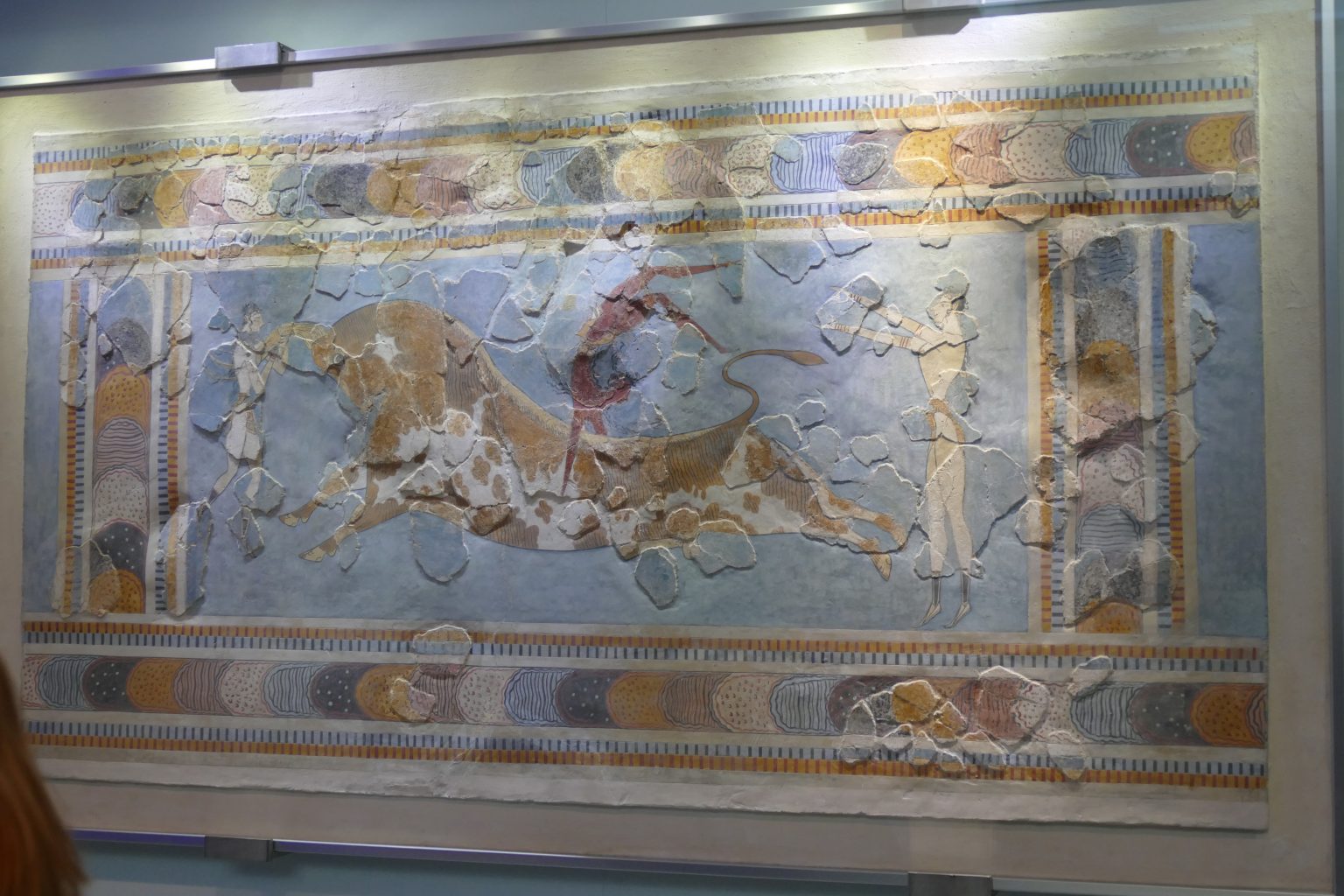
The Hagia Triada Sarcophagus
Dating from 1370-1300BC, it is made of limestone, and depicts the burial rituals, as well as scenes associated with beliefs about the afterlife.
Drinking vessels. Not sure if I could balance them this well after a glass of wine 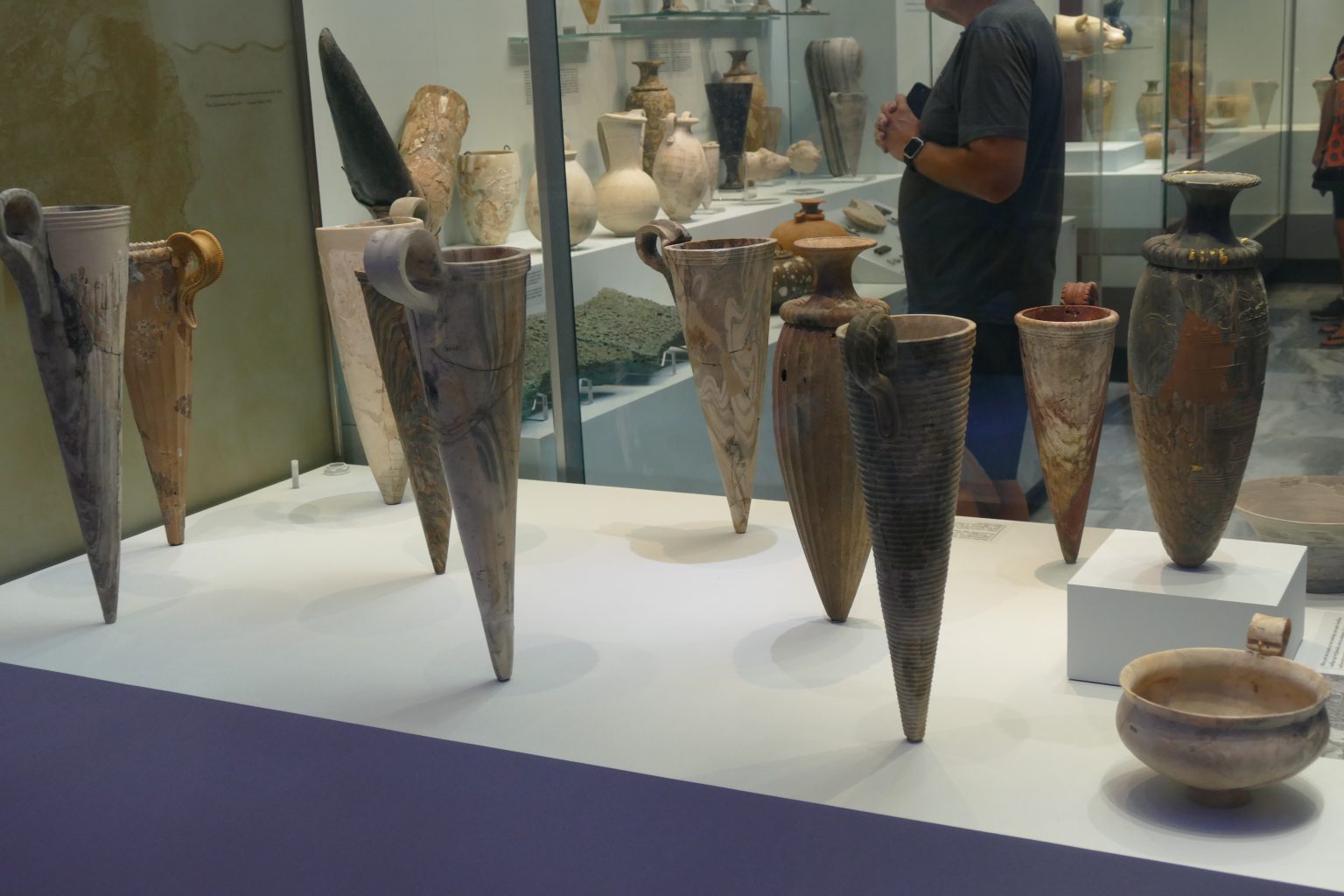
Stone bull’s head. Not actually an ornament, but a drinking vessel.
The worrying thing for me is that it was found in the ‘Little Palace’, which is where the royal children lived, rather than in the main palace.
This lioness skull is made from translucent limestone, and dates to 1600-1500BC. It also was a drinking vessel.
Unlike many Minoan frescoes, some in the Palace were 3D (technically called High Relief)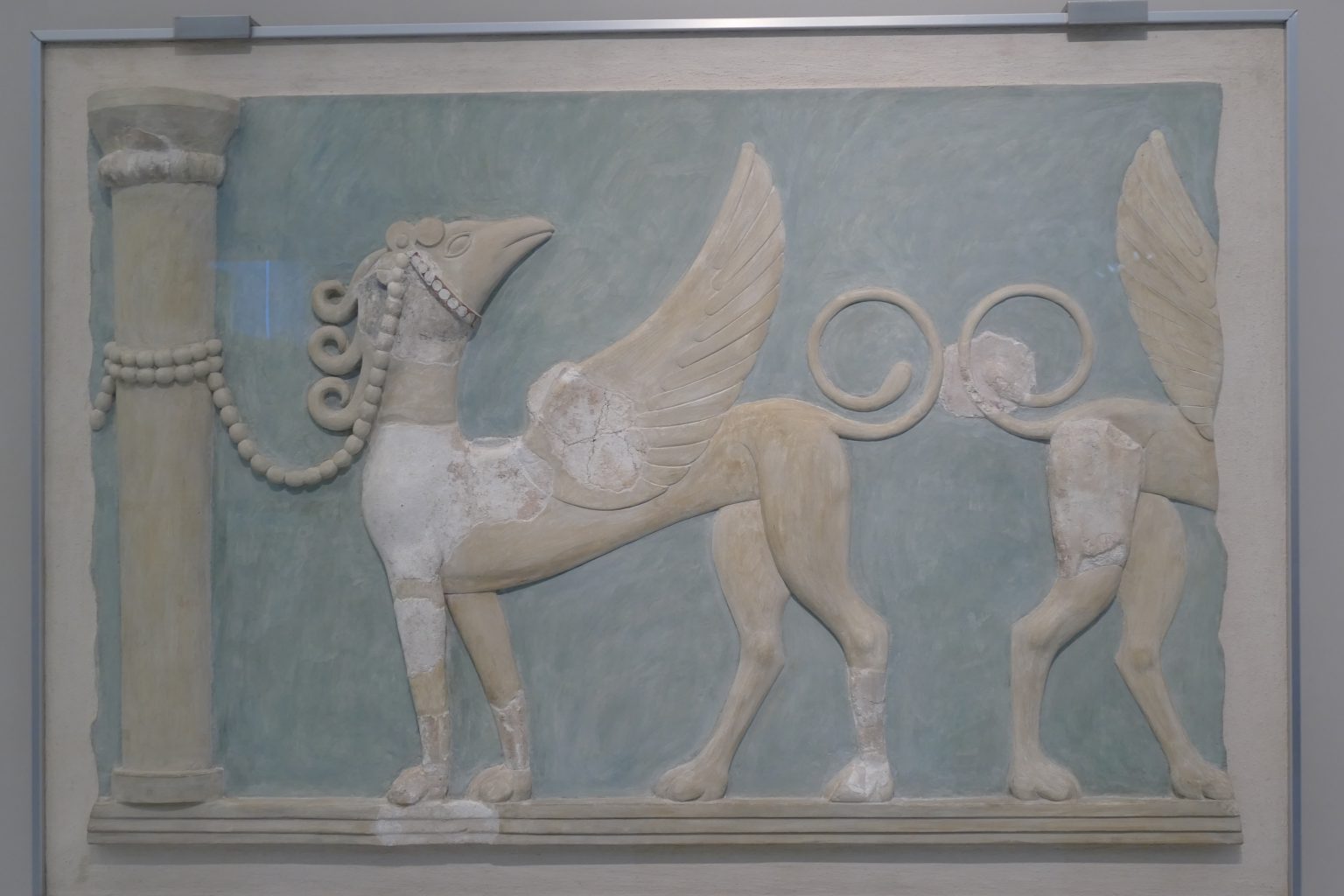
The so called ‘Parisian Lady’. Simply because she looked like the ladies of Paris with painted make-up. Everything old is new again…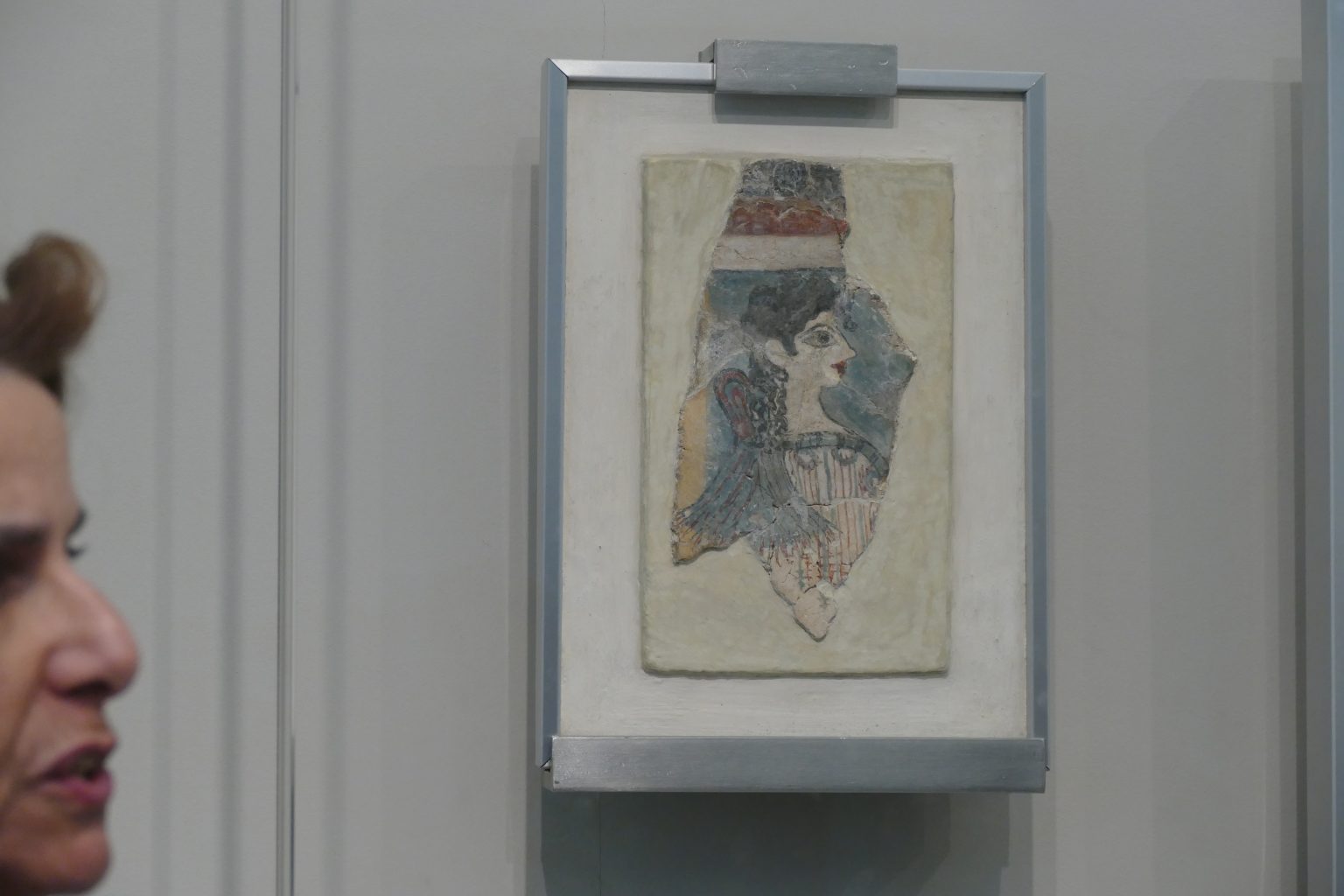
The fountain in the main square of Heraklion, where Viv, David and I shared drinks and chocolate drowned pancakes. 